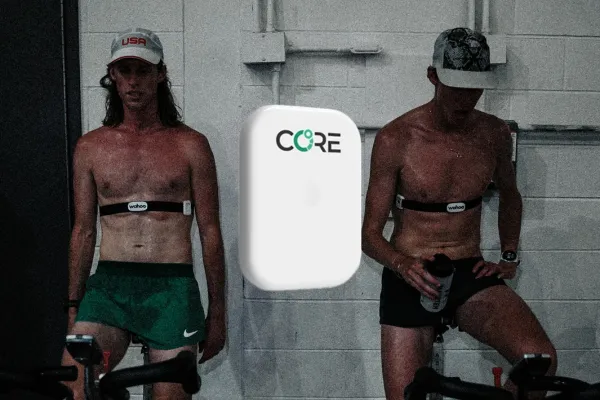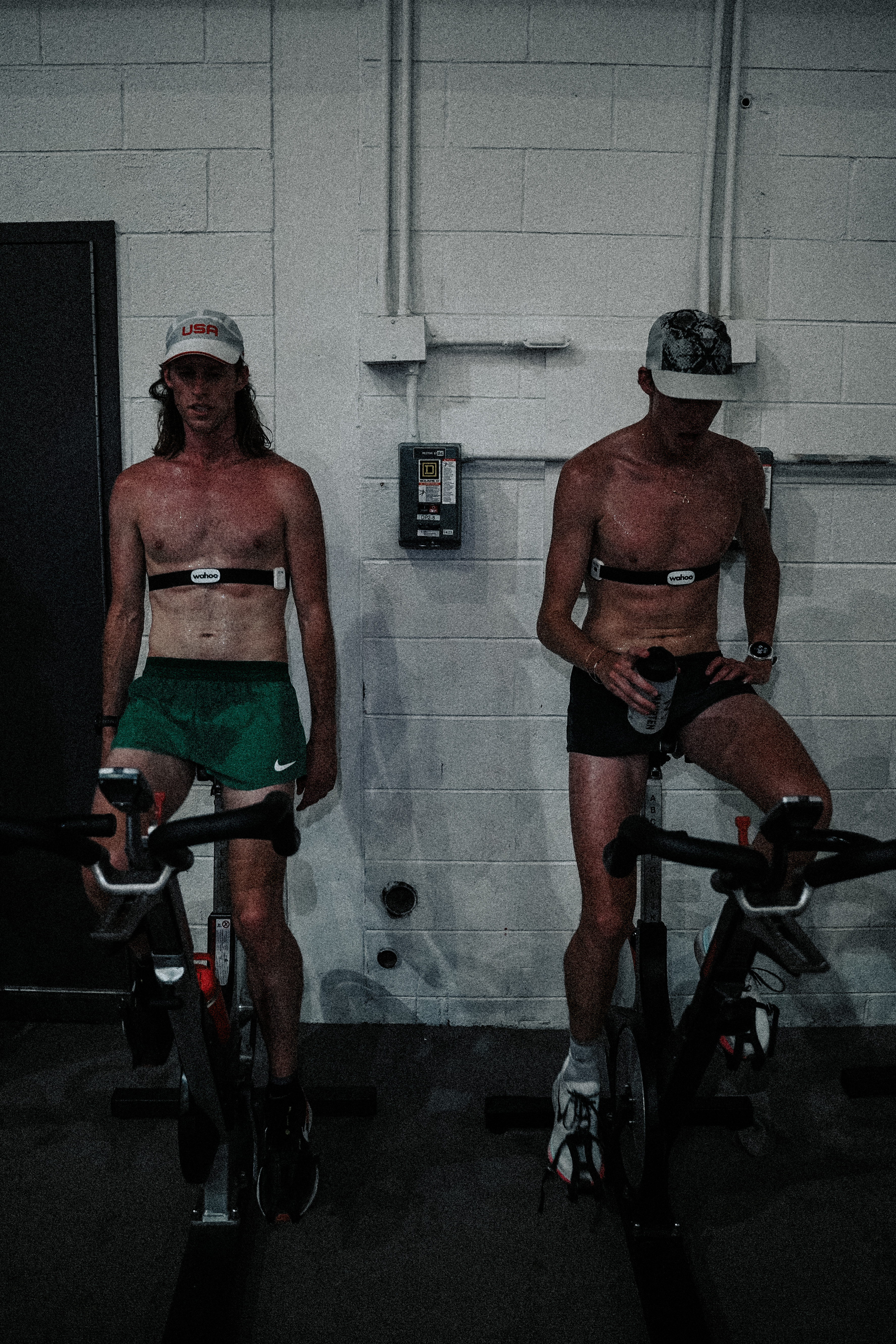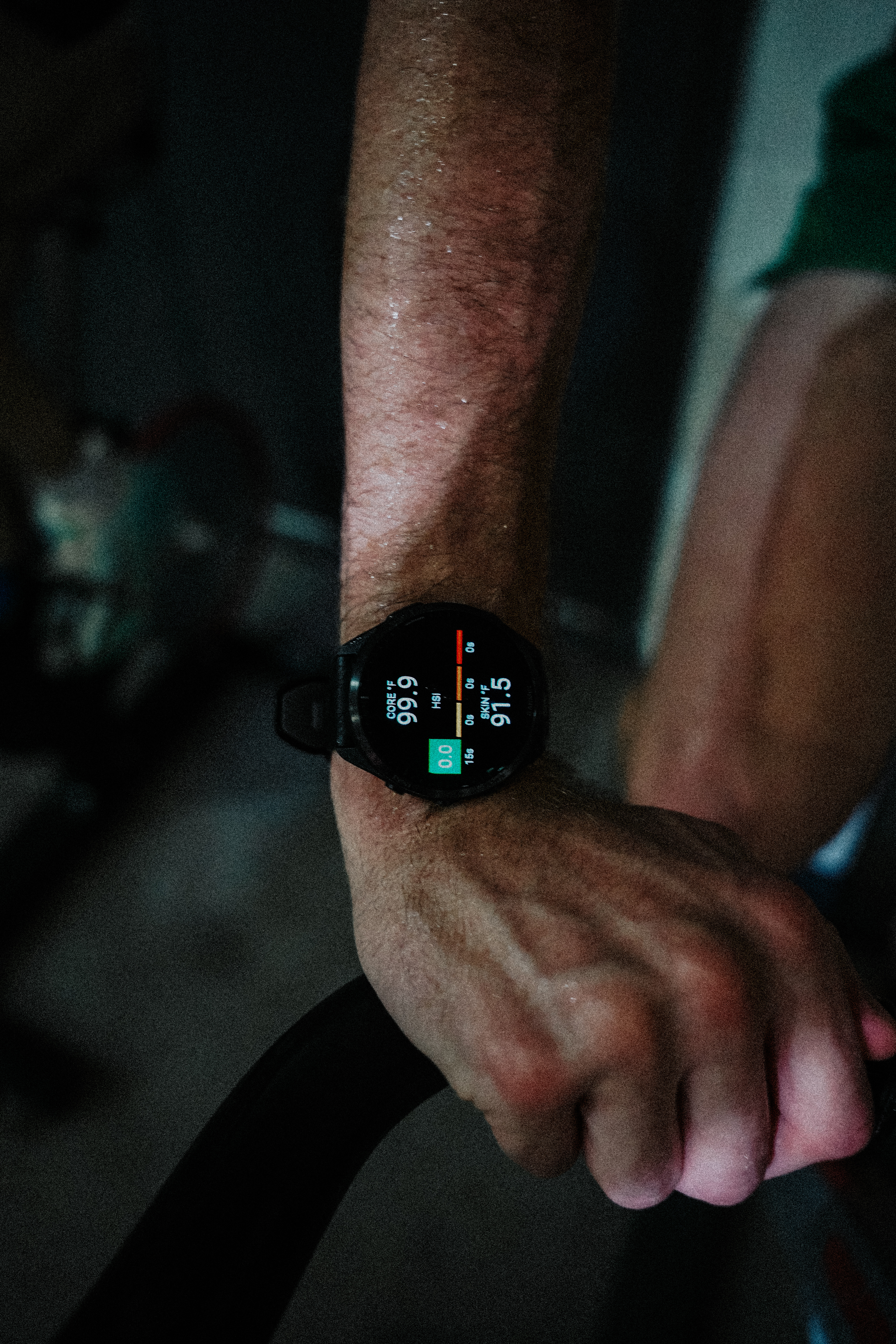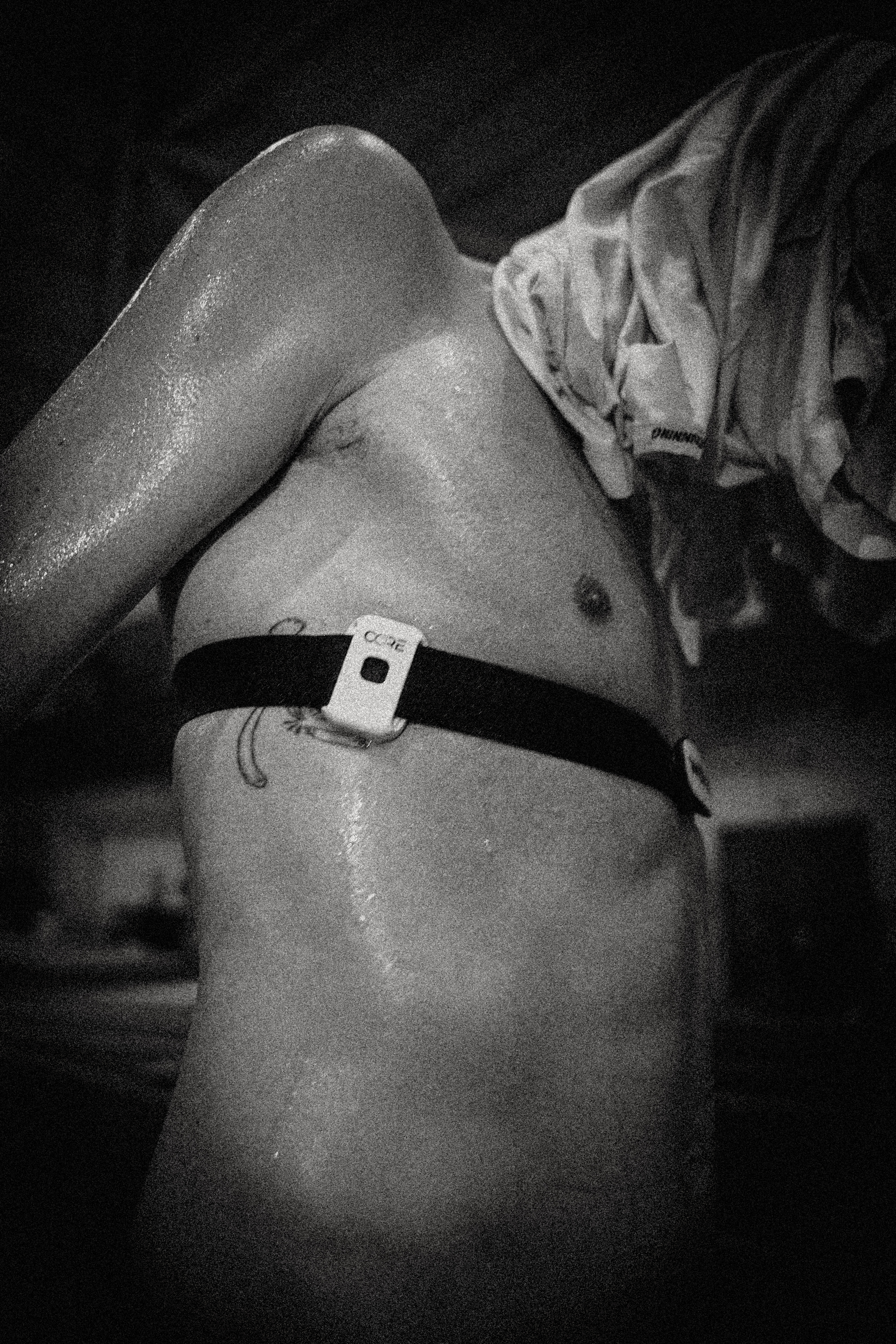
Embracing the Heat: SOVA’s Partnership with CORE for Smarter Training
Embracing the Heat: SOVA’s Partnership with CORE for Smarter Training
A New Partnership for SOVA
Today, I’m thrilled to share some big news: Team SOVA is partnering with CORE Body Temp, a leading wearable technology that measures core body temperature in real time. For those who don’t know me, I’m Aidan Tooker – one of four athletes on Team SOVA alongside Olympic 1500m champion Cole Hocker, U.S. 1500m & XC champion Cooper Teare, and middle-distance star Rachel McArthur. As an elite squad training in the Virginia, we’re always searching for that extra edge. Now, with CORE’s support, we’re integrating heat adaptation training into our program in a way that puts athlete health and performance first.

Why heat adaptation? In elite competition, races can be won or lost by razor-thin margins. Environmental factors – especially heat – play a huge role in performance. When your core body temperature soars during intense training or racing, your body diverts blood to the skin for cooling (sweat evaporation) instead of to your working muscles. This natural cooling response helps prevent overheating, but it also slows you down as less blood (and oxygen) reach the muscles. We’ve all felt that sluggishness on an unexpectedly hot day. However, by training for heat ahead of time, you can teach your body to handle higher core temperatures more efficiently and delay that slowdown. In one study, cyclists who added heat training for just 10 days improved their time trial speed by 8% – a massive gain in a sport often decided by fractions of a percent.
Heat acclimation doesn’t just help in hot weather, either. It boosts blood plasma volume and hemoglobin, effectively raising your aerobic ceiling (more blood means more oxygen delivery) even in cooler conditions. In other words, heat training can make you faster in any weather. Studies show it can improve VO₂max, lactate threshold, and power output by expanding your blood volume and thermoregulatory capacity It also conditions you to start sweating earlier and more efficiently, which keeps your core temperature stable when it counts. All these adaptations are gold for an endurance athlete. To put it plainly: if we can acclimate to the heat, we can race harder and longer before the heat forces us to slow down.
Hard Lessons: Cautionary Tales of Heat Training

If heat adaptation is so beneficial, why haven’t we been doing it all along? Like many athletes, we’ve learned that heat training is a double-edged sword. A few years ago in college, Cole and Cooper experimented with heat protocols – things like wearing extra layers during runs, post workout heat chambers and post-run sauna sessions – hoping to prepare for championship races in hot conditions. Unfortunately, that period coincided with both of them getting injured. Whether the added heat stress contributed to those injuries is hard to say, but the timing was enough to make them (and our coach) extremely cautious about heat training going forward. From their experience, we took away a clear lesson: heat stress without proper guidance can be risky. Overheating or dehydrating in training can lead to exhaustion, hinder recovery, and potentially set the stage for injury. As a result, SOVA has been hesitant to incorporate dedicated heat adaptation work – until now.
What’s changed is the confidence we have thanks to our new partnership with CORE. The CORE team isn’t just handing us sensors and walking away; they’re providing expertise and personalized guidance on how to reintroduce heat training safely. This is actually the first time since those college days that Cole and Cooper feel comfortable giving heat protocols another shot, and it’s because now we have real data and “guardrails” in place. We’re approaching heat training in a smarter, more controlled manner – one built on science and monitoring, rather than trial-and-error. We know how transformative heat acclimation can be for performance, especially with big events on the horizon, but we also know we have to do it right. With CORE’s technology, we have the tools to make heat training a quantifiable, injury-free part of our routine.
How CORE’s Wearable Tech Keeps Us Safe and Strong
So, what exactly is CORE and how is it helping us train “smarter” in the heat? CORE is a small, lightweight sensor that clips onto a heart-rate strap or sports bra – about the size of a matchbox – and continuously measures your core body temperature during training. It does this through an innovative thermal energy transfer sensor and an AI algorithm, meaning it can accurately gauge your internal temperature without any invasive probes or pills (In the past, the gold standard for core temperature measurement was swallowing an electronic pill or using a rectal thermometer – effective, but not exactly practical for daily workouts!) CORE’s device changes the game; it’s the only wearable solution that lets athletes monitor core temp in real time throughout a workout, with accuracy comparable to those medical-grade internal methods. In fact, the CORE readings have been validated against ingestible thermometer pills, so we can trust that the number on our watch or phone is reflecting what’s really going on inside our body.
How does this help us? In short, CORE provides immediate feedback and safety rails during heat training. We wear the sensor whenever we purposefully expose ourselves to heat stress – for example, during a treadmill session in a heated room, an outdoor run on a hot afternoon or cycling after a session. The device pairs with an app (or our Garmin GPS watches) to display our current core body temperature and a metric called the Heat Strain Index, which quantifies how hard our body is working to cool itself. If that Heat Strain Index starts creeping too high or our core temp approaches unsafe levels, we get an alert. This means we can back off the intensity, take a hydration break, or cool our bodies before things get dangerous.
It guides us to the optimal heat adaptation zone and warns us if we’re pushing too far. The optimal “heat training zone” is a specific range of elevated core temperature that triggers adaptations without causing harm In practice, that might mean aiming to keep our core around, say, 38.5°C (101°F) for a certain period. Without CORE, we’d have to guess where that sweet spot is – but now we can actually see it in real time and adjust on the fly. As one elite ultra-runner put it after using CORE, “it took the guessing out” of heat training and allowed far more targeted, effective sessions. We’re already experiencing the same thing.
CORE’s wearable sensor and mobile app give us real-time insight into our body’s thermal status. The small device (shown above, in white) clips onto a chest strap or apparel and continuously monitors core temperature. On the app, we can see metrics like our current core temp, Heat Strain Index, and even a Heat Adaptation Score that tracks our progress over weeks of training. Having this data at our fingertips lets us push our limits confidently – we know when we’re in the productive heat zone and get alerted if we edge toward unsafe territory.

The CORE app logs how much time we spend in the heat training zone each session and even computes a Heat Adaptation Score (on a 0–100% scale) reflecting how adapted we are to heat over the past few weeks. As our training progresses, it’s hugely motivating to watch that score climb from “Thermal Rookie” upward – tangible proof that our bodies are getting better at handling the heat. It gives us control and accountability: if the score is low, we know we have more work to do; if it’s high, we can be confident we’re ready for hot conditions This kind of feedback used to require a full sports science lab, but now it’s available on our phones. And importantly for Cole, Cooper, Rachel, and me, it provides peace of mind. We’re no longer just blindly subjecting ourselves to heat and hoping for the best. Every extra layer we put on, every minute we spend in the sauna after a run – it’s guided by data. CORE tells us “you’re in the right zone” or “that’s enough, time to cool down.” Those are the guardrails we need to avoid injury while still reaping the benefits of heat stress. As the CORE team likes to remind us, train hot, race cool – but train hot wisely.

Putting CORE into Action: Our Training Plan
At SOVA, we’re not using CORE to overhaul our training—just to sharpen it. Our focus is simple: layering heat stress onto already scheduled training to promote adaptation without overloading the system.
Stacked Heat Sessions: After key workouts, we’ll tack on easy treadmill runs or outdoor efforts during peak heat, especially with Blacksburg’s rising humidity. The sensor helps us regulate each session in real time, keeping our core temps in the target range without guessing.
Passive Heat Work: We're adding sauna sessions post-run to extend heat exposure without extra pounding. CORE tracks how long we stay at elevated temps, helping us fine-tune the effect without crossing safety lines.
Adaptation Score Tracking: We’re using CORE’s app to track progress with the Heat Adaptation Score. This adds structure to something that used to be vague—now we know when we’re getting more resilient or need to pull back.
It’s minimal disruption for maximum insight. The goal is to keep progressing smartly and sustainably—not just train hard, but train better.
Smarter Training for Hotter Races
Our partnership with CORE Body Temp isn’t about trends or gimmicks—it’s about precision. As athletes, we’ve always measured the visible stuff: pace, reps, splits. But heat? That was invisible. Now it’s not.
With CORE, we’re not guessing. We’re building resilience session by session, learning how each of our bodies responds to stress, and making sure we show up ready—physically and mentally—when the heat is on.
This isn’t about adding more to our plate. It’s about using the tools we have to train with purpose, adapt efficiently, and stay ahead of the curve as conditions—and competition—get tougher. For a team built on daily discipline, this is just one more layer that helps us rise.
We’re also huge fans of modern cycling and the performance mindset behind it. Watching athletes like Tadej Pogačar use the CORE sensor as he dominates the world’s hardest stages makes it clear: this tech is becoming the gold standard for elite preparation. That inspires us.
Train hot, race cool. See you on the line.
